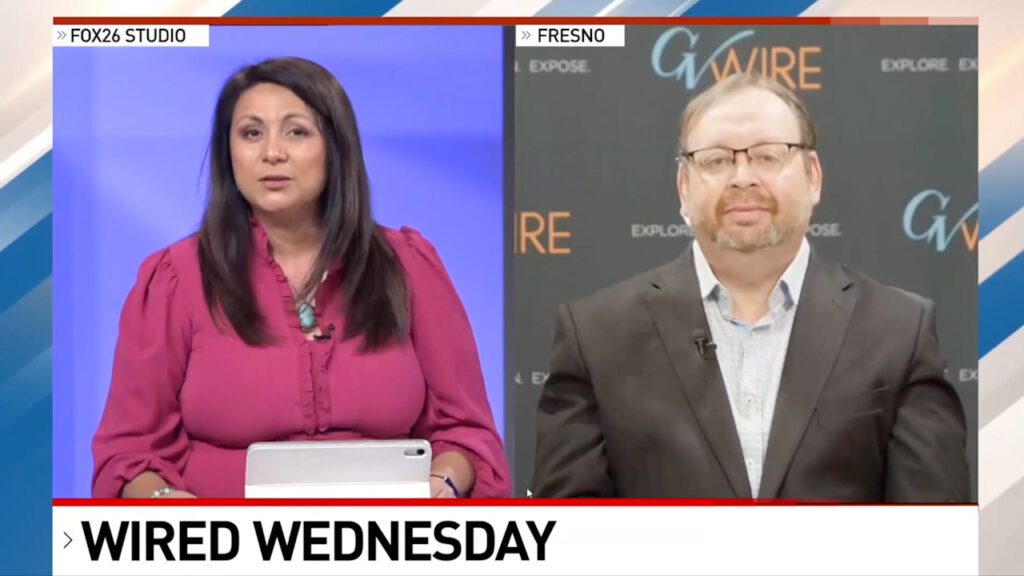Democratic candidates for California governor are hesitant to fully back the state's anti-oil policies, citing concerns about jobs and energy costs. (CalMatters/Fred Greaves)

- Candidates for governor express caution about state policies targeting the oil and gas industry due to potential job losses.
- Closing oil refineries could lead to significant job losses and higher fuel prices for Californians.
- Economists warn that further refinery closures could push California gas prices above $8 a gallon.
Share
This commentary was originally published by CalMatters. Sign up for their newsletters.
The most interesting moment of Monday’s labor union-sponsored interrogation of seven declared Democratic candidates for governor was their response to a question from the union representing oil refinery workers.
</>They were asked: “As governor, would you be pragmatic to stop targeting California’s oil and gas industry in ways that jeopardize union jobs and force us to rely on dirty or imported energy?”
The question stems the state’s intention to eliminate petroleum-based fuels over the next two decades and recent announcements that two of the state’s nine refineries will soon be closed.
Virtually every candidate signaled “yes.” Antonio Villaraigosa, the former mayor of Los Angeles, offered the most complete answer.
“We can’t continue to be a party of just people that drive a Tesla, not a Toyota pickup, or ride a bus like my mother did,” he said. “We’re putting this notion of just renewables on the backs of working people. We have the highest gas prices in the United States of America. We have the second-highest utility costs.”
As Villaraigosa implied, were refinery closures to continue, it could be a double economic whammy. Refinery workers would lose their highly paid jobs and the squeeze on fuel supplies could increase California’s already-high prices at the pump.
Job Market Challenges From Refinery Closures
Michael Bernick, an employment attorney who once led the state Employment Development Department, studied the impacts of previous refinery closures and found that promises of converting refinery jobs to well-paying alternative employment didn’t pan out.
Bernick, in a Forbes magazine article this month, wrote that “despite generous amounts of government funding for retraining and re-employment, few of the laid-off workers were able to obtain new jobs at anywhere near their previous wages, and a high number remained unemployed, more than a year after closure.”
Potential Economic Devastation
Two more refinery closures could hit consumers hard, according to an analysis by University of Southern California economist Michael Mische. Importing replacement supplies would be difficult, and shortages could push gas prices beyond $8 a gallon within the next couple of years.

“California can ill afford the loss of one refinery, let alone two,” Mische writes, adding, “The collective consequence of the pending refinery exits to the Golden State is potentially devastating to California’s economic growth and status as the fourth largest economy, in nominal terms, in the world. With the announced shutdown of Valero’s Benicia refinery complex accompanied by its $1.1 billion charge-off, California is confronting a potential 21% reduction in collective refining capacity from 2023 to April 2026.”
Mische also notes out that gasoline or diesel supplies and prices are not the only factors in California’s reduced refinery capacity. California provides much of the fuel consumed in Nevada and Arizona and the state’s many military bases also depend on California refineries to fuel their airplanes, ships and vehicles.
Mische’s bottom line:
“Based on current demand and consumption assumptions and estimates, the combined consequences of the 2025 Phillips 66 refinery closure and the April 2026 Valero refinery closure, together with the potential impact of legislative actions…the estimated average consumer price of regular gasoline could potentially increase by as much as 75% from the April 23, 2025, price of $4.816 to $7.348 to $8.435 a gallon by calendar year end 2026.”
The Newsom administration has been trying to persuade the media that Mische’s numbers are biased because he once advised Saudi Arabia on energy policy, but has not offered any economic analysis to refute his findings. A warming climate, of course, hastened by emissions, comes with disaster risks.
There’s no sugarcoating the impacts of energy conversion on both oil industry workers and consumers and managing it will be the next governor’s most perilous political and economic minefield. One misstep could be disastrous.
This article was originally published on CalMatters and was republished under the Creative Commons Attribution-NonCommercial-NoDerivatives license.
Make Your Voice Heard
GV Wire encourages vigorous debate from people and organizations on local, state, and national issues. Submit your op-ed to bmcewen@gvwire.com for consideration.




















